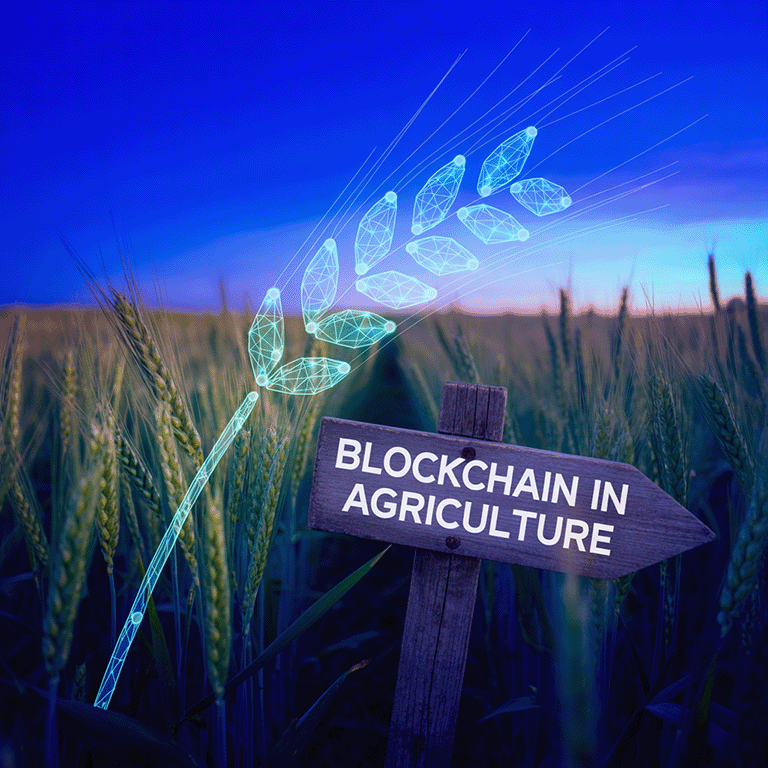Imagine you’re building a high-stakes gaming system where every millisecond counts. A real-time trading platform where delays could cost millions. Or an AI-driven app that needs to process data faster than your competition can blink. In these worlds, choosing the right programming language is not just important—it’s everything.
Some languages are built for speed. C++ can crunch data at blistering rates. Rust not only runs fast but also keeps your code safe from memory leaks. Go doesn’t just perform; it scales. These languages power the systems behind Google, Uber, and countless other giants, proving that speed and reliability can go hand in hand.
And then there’s Python. Slower? Yes. But in the realm of AI and data science, its vast libraries and tools level the playing field, making it the fastest way to build solutions that change the world.
At LITSLINK, we understand that speed comes in different forms. Execution speed. Development speed. Time-to-market speed. That’s why our IT specialists are masters of a wide range of programming languages. Whether you need real-time analytics, a lightning-fast backend, or AI innovation, we’re here to help you choose the right tool—and build the solution that sets you apart.
In this article, we’ll discuss the 15 fastest programming languages. Keep reading to find the technology that fits you the best.

Programming Language Performance: What Makes Them Fast?
Execution time and how quickly developers can write and deploy code are some factors determining the fastest languages for programming. In web development, a programming language speed enables quick development and high performance, thus enhancing a good user experience and reducing resource utilization.
JavaScript and Python are examples of boosted programming language speeds. The former is popular for its source code performance and use in front-end/back-end development, and the latter is favored for its simplicity and quick web application development. Website responsiveness, load time, and the overall user experience depend on the development language, underscoring the importance of the programming language’s speed during development and execution.
The top 10 list of fastest coding languages to create applications with high-performance features includes Python, Rust, JavaScript, Go, and C#. These coding languages have earned their place because of their speed and efficient handling of complex tasks; however, their ability to ensure fast coding and execution is among the most crucial, thus making them useful in the competitive tech environment.
What are the 15 Fastest Programming Languages?

1. Go
Go, also known as Golang, is among the fastest-growing programming languages. Google developed it to enhance programming capabilities in the age of multicore and networked machines and large codebases. It speeds up the development of interpretative languages and improves the safety and performance of compiled languages.
This most efficient programming language is characterized by clean, straightforward, concise syntax that allows easy building of reliable and efficient software. Other features of Go include a garbage collector, incompetent inference, type safety, active community, interface system dynamism, and advanced support of concurrency, helping build anything from a small web server to a large distributed system.
Golang is employed for web servers, cloud services, microservices, and the design of the respective architecture, as it is highly efficient with concurrency and networks. This programming language with the quickest run time is also widely used in distributed system architecture, command-line tools, and data pipelines as a simple language with a strong standard library.
Its modern features find practical applications in DevOps as a simple and efficient technology for automation and rapid implementation and blockchain technology as a high-performance programming interpreted language. Golang is also used for artificial intelligence projects, as it effectively processes vast data volumes.

2. Rust
Rust is another fastest coding language known for its focus on safety, speed, and concurrency. It removes common bugs and errors in data processing and systems programming accompanied by direct memory access. Its specific functionalities allow it to be used for system-level programming work, embedded programming, and building high-performance, large-scale works. The ownership model in Rust tracks how a code is stored and used to compile different parts of the system while ensuring that each part is secure.
An ecosystem of its general-purpose language tools, including the Cargo package manager, is a plus to ease programming processes. A growing library of open-source libraries expedites programming across the industry, offering web and game development courses based on the mentioned general compactness and safety.
The key features include:
- Zero-cost abstractions in high-level development like generic programming and general high-level programming paradigms.
- Safe multithreading and blocking data races and programming crashes in data that is independent but dependent on the same source.
- Type inference, safety, and syntax in timing reduce errors in software maintenance and output generation.
- Safety with concurrency and proven durability: OS, caches, games, and Bitcoin currency accepted and acknowledged
The programming tool features are critical in embedded IOT science.
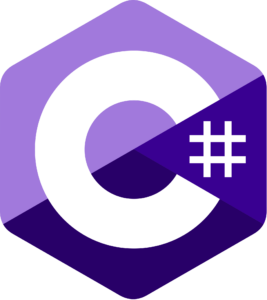
3. C#
C# is a programming language developed by Microsoft. C# is pronounced C Sharp. It is versatile and among the fastest-growing programming languages. It is widely used to develop desktop applications, web services, and enterprise software.
C# has the power and flexibility of C++ and is simple, like Visual Basic. For instance, it is a .NET framework language, implying that it allows experienced developers to create desktop, mobile, and internet applications. Its object-oriented programming nature makes it possible to write clean and manageable code, making it an excellent choice for large-scale applications. Its use of Unity, the popular game engine, also makes it an option for game development.
C# also has strong type checking, garbage collection, and extensive interoperability with Microsoft’s .NET framework, and its programming paradigms support object-oriented, task-based, and functional programming. Its syntax is based on C++ and Java Oriented c and comes with a wide range of libraries and functions that simplify development.
It is used to develop Windows desktop applications and is the primary, most powerful programming language for developing web services via ASP.NET. Many other tools, such as the Unity game engine, use C#.
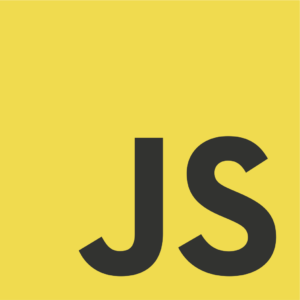
4. JavaScript
JavaScript is the fastest language programming in terms of dynamic, and it is primarily used in web development to implement interactive effects in web browsers from the client side. It is a front-end web technology with HTML and CSS, with which a software engineer creates new, dynamic, and interactive user interfaces.
JavaScript can be used on the server side as well. Google developers extended this language to work with server-side scripts. This was made possible with the Node.js runtime tool – as it can be executed outside a browser.
JavaScript can also be used for mobile applications—here, it supports the most powerful programming languages, such as the React Native and Ionic frameworks. In addition to all of this, JavaScript is the ideal, most efficient coding language to develop scalable network applications owing to its event-driven and non-blocking I/O model.
Moreover, JavaScript has multiple libraries and frameworks that can be used to develop software. The main directions of programming using JavaScript are the development of a client-side page appearance, the development of a server-side page appearance, the development of Android apps, and the development of a network application.
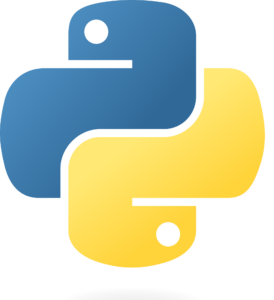
5. Python
Python is high-level, versatile, and the fastest backend language. It is well-received for its simplicity and readability aspect and is appealing to beginners and experts alike.
Python supports procedural, object-oriented, and functional programming. With its robust standard library and productive frameworks and tools, it excels in web development, data analysis, human-readable code, artificial intelligence, algorithmic efficiency, scientific computing, and more. Due to a wealth of libraries and frameworks available, such as Django for web applications or TensorFlow for machine learning, Python has a strong presence in the modern development world.
Python is notable for its elegant and readable syntax, dynamic typing, automatic memory management, and effortless integration with C/C++ or Java. It also operates in multiple programming paradigms, from procedural and object-oriented to functional programming. Python is bundled with an extensive standard library. It supports modules and packages for modular programming. An interpreter enables interactive testing and debugging, and the Python community created a vast ecosystem of third-party modules and frameworks.
Given Python’s versatility and robust libraries, this versatile language is applied in several industries and contexts. Python is the fastest-interpreted language of choice in web development, where the most notable frameworks used are Django and Flask. Other features are data science and data analytics, where Python boasts data manipulation and visualization libraries such as Pandas and Matplotlib, and in artificial intelligence and machine learning, where its popularity is carried by the TensorFlow or PyTorch libraries.
At the same time, Python functionalities are used in automation, scripting, and software development and testing. Scientific computing and academic research frequently require NumPy and SciPy libraries. Python also has an ever-increasing presence in the IoT field.
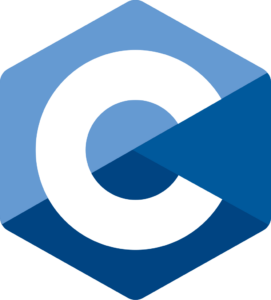
6. C
C is one of the fastest programming languages. Founded in 1972 by Dennis Ritchie at Bell Labs, it has survived through the ages and become the basis of innumerable technologies and programming paradigms. Its combination of speed, efficiency, and low-level memory control has made it a must-have in almost all system-level programming and performance-critical applications.
C has been designed with perspective speed and efficiency, uses high memory access and accessibility of direct system resources, and leads to well-optimized code being used everywhere. This is the main reason modern C is known as one of the languages mainly focused on operating systems, embedded systems, and performance-critical applications.
In the TIOBE Index 2025, C is one of the top four programming languages in the world. Furthermore, Stack Overflow shows that developers work with C as an active programming language, and most of them use it for high-performance needs and hardware input.
Applications of C
C has become a language of choice in different spheres, as highlighted below:
- Operating Systems:
- The Linux kernel, one of the most widely used operating systems, is written in C.
- Windows and macOS also rely heavily on C for system-level operations.
- Embedded Systems:
- Microcontrollers and embedded devices in cars, medical equipment, and IoT devices are programmed in C.
- For example, Arduino microcontrollers use C-based programming for automation and hardware interaction.
- Gaming and Graphics:
- Game engines like Unreal Engine 4 have components written in C for handling performance-intensive tasks like rendering graphics.
- The popular video game DOOM was originally developed in C.
- Databases:
- Leading database systems like MySQL and SQLite are built using C, offering high performance and reliability.
- Compilers and Interpreters:
- Many programming language compilers, including those for Python and Ruby, are written in C due to its speed and efficiency.
Why Developers Choose C
- Performance:
C programs compile directly into machine code, thereby minimizing overhead and increasing speed during execution. Regular benchmark comparisons conform to the premise that C solutions outperform those written in high-level languages like Java or Python. - Portability:
Programs written in C can run on a wide range of platforms with minimal modification, making it ideal for cross-platform development. - Control:
C gives memory control at a fine-grained level, using pointers to effectively use system resources. Such depth in control proves valuable in those fields where there are demanding constraints for performance and resources
The power of C goes far beyond its syntax. It has inspired concepts and structural mathematicians for the formulation of many modern languages, such as C++, C#, and Objective C. Moreover, C-built libraries and frameworks are usually enlisted in high-level languages, thus silently serving as the chief productive engine of much software today.
For example:
- Git, the world’s most popular version control system, is written in C, ensuring speed and reliability even when handling massive repositories.
- Python’s core implementation (CPython) is developed in C, enabling it to execute Python code efficiently.
C is indeed more than 50 years old, but quite alive on the programming map-it is there to stay, considering the direct software world apart from unmatched performance and versatility. Our IT specialists at LITSLINK understand the power of C and know how to leverage it to come up with reliable, efficient, and scalable solutions for your business. Whether you’re developing a high-performing database, an embedded system, or a next-generation application, C lays the groundwork for your success.
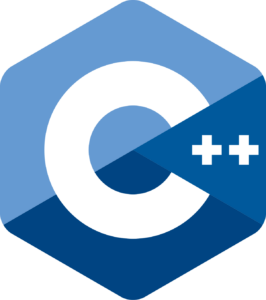
7. C++
C++ is a programming language that is combined with advanced features for object-oriented as well as high-level programming with the speed of C. Built in 1985 by Bjarne Stroustrup as an extension of C, this fastest programming language has become one of the most widely used and versatile programming languages in the world. Speed with scalability and outstanding functionality make C++ the backbone of a number of high-performance applications ranging from game engines to financial systems
C++ is often referred to as a “multi-paradigm” programming language because it is procedural, object-oriented, and functional, which is almost anything you might have in mind to do with it in programming. You can create a real-time system or a complex, accurate simulation of any future event, all with this flexibility.
The 2025 TIOBE Index ranks C++ as the second of the top programming languages globally, and the Stack Overflow Developer Survey states that over 22% of all developers actively use C++ in one or another of their applications.
Applications of C++
C++ has secured its position in those industries where performance and scalability, along with reliability, have no alternatives. Here are some of the examples:
- Gaming and Graphics:
- Game Engines: Unreal Engine and Unity, two of the most widely used game engines, are built on C++ due to their ability to handle resource-intensive graphics and real-time processing.
- Games: Popular games like World of Warcraft, Counter-Strike, and The Witcher 3 use C++ for their performance-critical components.
- Operating Systems and Drivers:
- Components of major operating systems, including parts of Windows, macOS, and Linux, are written in C++.
- Most device drivers and firmware span C++ by using its low-level access to the hardware and high-level abstractions.
- Financial Systems:
- High-frequency trading platforms and banking systems leverage C++ for its speed and reliability.
- Bloomberg Terminal, a cornerstone in financial data analysis, uses C++ extensively.
- Embedded Systems:
- C++ is used for automotive embedded systems software, robotics, and IoT, where efficiency and scalability are important.
- Simulations and Scientific Computing:
- C++ is the base for the simulation tools used in aerospace applications, automotive design, and physics research. For example, it is the language in which software is written for data processing in CERN’s Large Hadron Collider.
- Web Browsers:
- Core components of major browsers, including Chrome’s V8 engine and Firefox’s rendering engine, are implemented in C++ for optimal performance.
Key Features That Drive C++ Adoption
- Performance:
- C++ is among the fastest programming languages. It compiles directly into machine code. This makes it ideally suitable for real-time and resource-hungry programs.
- Benchmarks regularly prove that C++ will eclipse managed languages such as Java and Python in execution speed.
- Object-Oriented Programming (OOP):
- New OOP, as well as a feature of C++, allows writing modular, reusable, and maintainable code. Characteristics such as classes, inheritance, and polymorphism improve software design.
- Standard Template Library (STL):
- The STL saves developer time by providing already constructed data structures (vectors, maps, etc.) and algorithms (sudoku, search) while retaining high performance.
- Memory Management:
- While C offers sophisticated memory management, C++ offers higher-level features like RAII (Resource Acquisition Is Initialization) and smart pointers, which reduce the risk of memory leaks and errors
- Cross-Platform Development:
- Most of the applications written in C++ can be compiled with little alteration for use on different platforms. Such is the portability that can provide C++ a preferred option when developing applications for such portability.
Real-World Examples of C++ in Action
- Adobe Systems: Industry-leading tools like Photoshop and Premiere Pro are built using C++ for their ability to handle complex processing tasks with speed.
- Microsoft Office Suite: C++ drives key components of Word, Excel, and PowerPoint for its combination of performance and scalability.
- Tesla’s Autopilot Software: C++ plays a crucial role in the real-time decision-making and sensor integration that powers Tesla’s autonomous driving technology.
C++ is still evolving, with features such as concepts, ranges, and coroutines, which have been added to enhance usability and performance in the most recent standard called C++20. C++ remains one of the software of choice for industries requiring powerful, reliable, and scalable solutions.

8. Fortran
At present, Fortran is short for production or formula translation. It is one of the earliest high-level programmed languages and has always remained one of the major keys in scientific or numeric computing. In its own right, Fortran acts as both an angel and a devil.
Developed in 1950, IBM disseminated Fortran to all engineers and mathematicians who desired an easy way to write code, like mathematical formulas. Decades have passed, but still today, it beats the phenomenal breakthroughs of engineering equipped with physics or computational science.
Fortran is synonymous with performance in numerical computation. Its design prioritizes efficient array handling, numerical precision, and optimization—qualities essential for large-scale simulations and data modeling. While newer languages have emerged, none rival Fortran’s ability to handle complex mathematical computations with such precision and speed.
This fastest programming language is actively maintained, with the latest standard, Fortran 2023, introducing modern features like parallel programming constructs. Despite its age, Fortran remains a top choice in industries where accuracy and performance are non-negotiable.
Applications of Fortran
- Scientific Computing:
- It is the dominant language for fluid dynamics, meteorology, and astrophysics applications.
- NASA has also been depending on this program for space mission simulation and orbital mechanics.
- Engineering Simulations:
- Weather Forecasting and Climate Modeling:
- Large datasets can benefit from the effective handling inherent in Fortran through the formulation of the GFS, the Global Forecast System run by the National Weather Service of the U.S., and other meteorological models.
- For global weather prediction, the ECMWF (European Centre for Medium-Range Weather Forecasts) runs certain models in the Fortran application.
- High-Performance Computing (HPC):
- Fortran is a go-to language for supercomputers, often appearing in the Top500 supercomputer applications.
- Complex models, such as simulating nuclear reactions or seismic events, often depend on Fortran’s computational prowess.
- Scientific Libraries:
Key Features of Fortran
- Unmatched Performance in Numerical Computation:
- Fortran’s efficient array operations and mathematical precision make it a leader in computational speed. Benchmarks frequently show Fortran outperforming general-purpose languages like Python, Java, or even C in specific numerical tasks.
- Array Handling and Multidimensional Data:
- Fortran was one of the first languages to introduce native support for arrays, making it ideal for mathematical models involving matrices or tensors.
- Parallel Processing:
- It has included OpenMP and MPI standards for supporting parallelism, which is further discussed in modern versions of Fortran. Thus, Fortran is now a parallel programming tool for all programmers.
- Backward Compatibility:
- Decade-old Fortran code can still run in current systems, which makes it essential for any legacy system in science and engineering.
- Domain-Specific Optimizations:
- Fortran compilers are highly optimized for numerical tasks, often outperforming generic compilers used for other languages.
Real-World Examples of Fortran in Action
- Supercomputing:
- Supercomputing has Summit, the supercomputer at the Oak Ridge National Laboratory, which happens to be among the fastest in the world and has a lot of Fortran applications in scientific research.
- Climate Science:
- Community Earth System Models (CESM) are primarily Fortran-based and used for research in understanding climate change.
- The Coupled Model Intercomparison Project (CMIP) has Fortran simulations and is a major contributor to IPCC reports.
- Physics Simulations:
- CERN employs Fortran for particle physics simulations in projects like the Large Hadron Collider.
- Fusion energy research, including simulations for ITER, is powered by Fortran.
While Fortran is often considered a “niche” language, its role in scientific computing remains unmatched. The introduction of modern features in standards like Fortran 2008 and Fortran 2018 has addressed criticisms of the language, making it easier to integrate with contemporary tools and workflows.

9. Julia
The origins of Julia can be traced to its introduction in 2012 by a team from the Massachusetts Institute of Technology. The language, which stands out as a modern programming language bridging the gap between ease of use and sheer computational power, was instituted to address shortcomings in existing languages, mainly pertaining to scientific computing, data analysis, and machine learning. Combining the speed of C with the simplicity of Python enables Julia to become a promising choice among researchers, data scientists, and engineers, who will soon be solving the most complex computation-heavy problems on the planet.
Julia is one of the fastest programming languages designed for high-performance numerical computation and dynamic programming, statically typed. Its greatest asset is the speed, which is at par with that of low-level languages such as C, with still an extremely intuitive and beginner-friendly syntax.
Applications of Julia
- Scientific Research:
- Julia is applied extensively in the fields of physics, chemistry, and biology to simulate and model data.
- An evident example of this is the Computational Fluid Dynamics (CFD) package Turbulence.jl, in which Julia is well equipped to handle very complex simulations.
- Machine Learning and AI:
- Julia’s ML ecosystem, including frameworks like Flux.jl and MLJ.jl, provides efficient tools for training and deploying machine learning models.
- OpenAI has used Julia in the development of neural network frameworks for its speed and scalability.
- Data Science and Statistics:
- Julia is ideal for data exploration. It offers built-in parallelism and support for big data libraries like DataFrames.jl.
- In fact, Invenia models energy markets based on available data points, which in some cases go into billions, by the organizations employing Julia.
- High-Performance Computing (HPC):
- Julia is a favorite in HPC due to its native support for distributed and parallel computing.
- The Celeste project, which mapped 188 million astronomical objects in just 15 minutes on a supercomputer, was powered by Julia.
- Financial Modeling:
- Julia is gradually becoming used in quantitative finance to model risks, optimal portfolios, and high-frequency trading.
- BlackRock has adopted Julia under its Aladdin umbrella, thus advancing analytics and risk management.
Key Features of Julia
- Speed:
- Julia is compiled just-in-time (JIT) using the LLVM framework, achieving speeds comparable to C and Fortran.
- Benchmarks show Julia outpacing Python, R, and Matlab in computational tasks.
- Multiple Dispatch:
- Julia’s multiple dispatch system allows functions to operate differently based on the types of their arguments, enabling more efficient and flexible code.
- Dynamic and Intuitive Syntax:
- Its syntax is similar to that of Python and MATLAB, making the transition easy for scientists and researchers.
- Parallelism and Distributed Computing:
- Julia has built-in support for parallel and distributed computing, allowing users to utilize multicore processors and clusters without extra configuration.
- Interoperability:
- Julia can use any C code along with Python, R, and Fortran codes; thus, they can easily work on the existing tools and workflows without overhead.
- Rich Ecosystem of Libraries:
- Julia’s growing package-elevating ecosystem now includes libraries for data analysis, machine learning, optimization, and visualization, making it a one-stop solution for technical computing.
Real-World Examples of Julia in Action
- NASA: Julia is used in space mission planning and simulation for its ability to handle complex orbital mechanics calculations.
- Climate Modeling: Researchers use Julia to model climate systems, optimizing computations for large-scale simulations.
- Pharmaceutical Research: Julia has been employed to analyze drug interactions and streamline the discovery of new treatments.
- Uber: Julia is part of Uber’s forecasting system, providing rapid and accurate demand predictions.
As industries demand more computational power and scalability, Julia’s unique blend of speed and simplicity positions it as a vital tool for the future. Its ongoing development and growing community ensure that Julia will continue to evolve to meet modern challenges.

10. Ada
Ada is a high-level programming language designed with safety, reliability, and maintainability as its core values. Originally sponsored by the U.S. Department of Defense in the late 1970s, Ada still remains the premier choice for safety-critical applications in aerospace, defense, transportation, and other industries, wherein failures are intolerable. The strength of its type system, stress on error prevention, and its support for real-time programming position Ada as a language apart in the domain of dependable software development.
Ada was conceived from the ground up to address the issues in programming complicated, large-scale systems. Its emphasis on correctness and readability, rather than the normal restriction of very strong support for real-time and concurrent programming, creates a language that should be used in the fields of high assurance and enduring maintenance.
Entirely revised and confirmed by the latest development with Ada 2022, Ada’s ISO standard keeps it evergreen in the face of modern software challenges. Ada is among the foremost usages among the top fastest programming languages in the fields of aerospace and defense, also extending to civilian applications like medical devices and railway systems, according to industry surveys.
Applications of Ada
- Aerospace and Defense:
- Avionics Systems: A flight control software base for aircraft like Airbus A380 and Boeing 787; those are produced with Ada.
- Military Systems: The language is used in missile guidance systems, radar control, and navigation systems.
- Space Exploration: NASA and the European Space Agency rely on Ada for software in satellites, rovers, and onboard systems for spacecraft.
- Transportation Systems:
- Railway Control: Ada powers systems like the European Train Control System (ETCS), ensuring safety and efficiency in high-speed rail networks.
- Automotive Software: Ada is employed in advanced driver-assistance systems (ADAS) and other safety-critical automotive components.
- Medical Devices:
- Ada’s focus on safety makes it ideal for programming pacemakers, infusion pumps, and other life-critical medical equipment.
- Industrial Automation:
- Factories use Ada to manage robotics and control systems, where reliability is paramount to avoid downtime or accidents.
- Banking and Financial Systems:
- Ada is sometimes used in financial transaction systems requiring fault tolerance and strict accuracy.
Key Features of Ada
- Reliability and Safety:
- Ada’s strong type system catches many programming errors at compile time, reducing runtime errors.
- Contracts are enforced (preconditions, postconditions, invariants) in code so that software works as it is expected to when in use.
- Real-Time and Concurrent Programming:
- Ada’s inherent support for multitasking makes it a language of choice for systems where real-time responsiveness is essential.
- Its deterministic execution model provides great benefits for time-critical operations in aerospace or industrial automation.
- Portability:
- Ada’s design ensures code can be easily ported across different hardware and operating systems, a critical feature for long-lived systems.
- Maintainability:
- Ada emphasizes readability and modularity, which have been essential for maintaining complex systems for decades.
- Error Prevention:
- Features like range constraints, compile-time checks, and exception handling prevent common bugs like buffer overflows and arithmetic errors.
- Standardization and Certification:
- Thanks to its standardization in safety-critical areas, ranging from DO-178C in avionics to ISO 26262 in automotive, Ada has made it easy to be certified in this aspect.
Real-World Examples of Ada in Action
- Air Traffic Control: Ada is used to manage airspace across Europe in systems like Eurocontrol’s Advanced Maastricht Upper Area Control Centre (MUAC).
- Satellites: Ada powers the software controlling the Hubble Space Telescope and several ESA and NASA satellite missions.
- Railway Automation: Ada is used in Thales’ railway signaling systems, ensuring precise control and safety.
- Medical Devices: Philips employs Ada for imaging systems software, ensuring high reliability and accuracy.
Perhaps with the exception of Ada, whose significant qualities are often drowned out by common, general-purpose languages, it still brings something to the long-standing saga of safety-critical, real-time systems. Moreover, since the latest update to the Ada standard, Ada 2012 has featured rich elements of contract-based programming and improved multicore support, thus safeguarding its current competitiveness in modern software development.
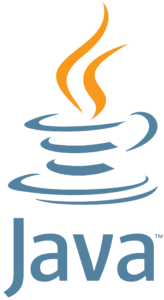
11. Java
Java is the longest-lasting programming language that offers the benefits of platform independence, robustness, and a rich ecosystem. It was introduced by Sun Microsystems (now Oracle) in 1995. Since then, Java has come to represent not only enterprise applications but also web services and mobile development. Its “write once, run anywhere”(WORA)-philosophy and backward compatibility secure its position and usage in multiple areas.
Another factor that makes Java so universal is that it strikes the right balance between power and simplicity. It’s object-oriented and secure, but its incredibly large library ecosystem makes it applicable to almost anything. As measured by TIOBE, Java is constantly among the top fastest programming languages, serving as a field for more than 9 million developers around the world.
Applications of Java
- Enterprise Applications:
- Java is the flagship when it comes to enterprise software development. No wonder it is used by companies such as Amazon, LinkedIn, Uber, and others for building their large-scale systems.
- Frameworks, including Spring and Hibernate, help in building a solid and scalable business application easily.
- Web Development:
- Java is the server-side language for web applications. Its entire functionality is provided by JavaServer Pages (JSP) and Servlets.
- Enterprise-level web frameworks, including Spring Boot and Vaadin, take care of backend development.
- Mobile Applications:
- Android is among the most widely used mobile operating systems worldwide. Its applications are developed using Java.
- Through Android Studio, one can develop feature-rich applications meant to run on billions of devices.
- Big Data and Analytics:
- Java is really a significant role player in the world of big data ecosystems, as several technologies like Hadoop, Apache Spark, and even Elasticsearch were built on Java or are Java-based technologies.
- Businesses use Java technologies in the ingestion, processing, and real-time analytics of data.
- Internet of Things (IoT):
- Java is the ideal candidate for IoT applications thanks to its cross-platform abilities and security.
- Smart home devices, industrial sensors, and connected vehicles run on Java-based firmware.
- Financial Systems:
- High-frequency trading platforms, payment systems, and risk management systems at all the financial institutions, including JPMorgan Chase and Goldman Sachs, use Java for these purposes.
- Precision and reliability thus make it possible to develop applications that comply with very strict financial regulations. This makes Java the best choice for all activities in financial services that risk unnecessary revenue loss.
- Game Development:
- Though it might not be at par in the AAA gaming segment, Java is above average when it comes to developing mobile and indie games. One of the best-selling games of all time, Minecraft, was originally written in Java.
Key Features of Java
- Platform Independence:
- Java code generates bytecode, which can be executed on any operating system that has its own Java Virtual Machine (JVM).
- Rich Standard Library:
- In addition to incorporating a rich API for the development of networking, file I/O, multithreading, and other such capabilities, Java also embraces a well-divided standard library (Java Standard Edition, SE).
- Scalability:
- Java applications are scalable, which is why they are preferred for the development of systems with high traffic such as e-commerce and social networking sites.
- Security:
- Java is equipped with a Security Manager, sandboxing, and other encryption support that serves critical applications best and makes them safer.
- Object-Oriented Programming (OOP):
- Java’s OOP model promotes code reuse, modularity, and scalability, which are essential for large projects.
- Community and Ecosystem:
- A vibrant community clings to Java to assure continual updates, help, and access to frameworks, libraries, and tools for any task imaginable.
Real-World Examples of Java in Action
- Amazon:
Millions of transactions flow through the backend of Amazon’s e-commerce platform, powered by Java. - Netflix:
1,000 million users have the advantage of a seamless experience streaming movies; the behind-the-scenes magic is the result of Java as a staple technology in Netflix’s microservices architecture design. - Google:
Java is an established and important language to Google. It runs most of its internal systems and Android tools, demonstrating its flexibility and performance. - Stock Exchanges:
The New York Stock Exchange and London Stock Exchange rely on Java-based systems for high-speed trading and data processing. - Education Platforms:
Moodle and Coursera are examples of platforms that use Java to fully support thousands of users in educational content delivery.
The evolution of Java is ongoing and guarantees continuous relevance due to regular updates from Oracle and its active open-source community. The latest versions include modern features such as pattern matching, records, and enhanced garbage collection that turn Java into an even more modern and developer-friendly programming language.
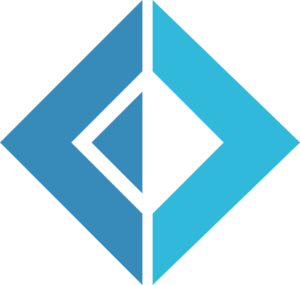
12. F#
F# is strongly typed and is typically a multi-paradigm programming language manufactured for Microsoft’s inclusion in its .NET framework. F# is functional, imperative, and object-oriented, making it inevitable for data science to version algorithmic calculations and even for constructing highly complex business applications. It comes as a more concise method emphasizes safe typing, and has an added advantage in scientific computing, financial modeling, and web development.
Providing that combination of functional programming principles with seamless provisioning to the .NET ecosystem, especially for domain-specific, data-heavy, and high-performance tasks. According to the Stack Overflow Developer Survey, F# still remains at the forefront of developer preference. This one of the fastest programming language complexity, certified by type safety, ensures efficiency in handling large workloads denoting its specialized capability when compared with general-purpose languages.
Applications of F#
- Data Science and Analytics:
- F# excels in handling large datasets and complex statistical analyses.
- Tools like FSharp.Data and F# Data Visualization are widely used in academic research and commercial analytics.
- Financial Services:
- Financial organizations use F# features for quantitative analysis, risk modeling, and algorithmic trading with real-time computation and rich numeric libraries, which are especially suited for high-frequency trading platforms.
- Scientific Computing and Engineering:
- Researchers rely on F# for computational physics, chemistry simulations, and mathematical modeling.
- F# is integrated into scientific computing platforms such as Math.NET and Math.FSharp.
- Web Development:
- While less common for large-scale web projects, F# is employed in areas requiring precise control, such as backend API development and microservices.
- Web frameworks like Suave and Giraffe facilitate web application development.
- Automated Testing and Software Verification:
- F# supports rigorous testing and software verification processes due to its strong type-checking and immutability features.
Key Features of F#
- Functional Programming Support:
- The paradigm of functional programming paradigm allows F# to run declaratively and favor higher-order functions, first-order, and immutability.
- Also, the type-inference system gives you less boilerplate code, which causes narrower and cleaner codebases.
- Interoperability with .NET and Other Languages:
- It also allows complete interoperability with JavaScript, Python, and SQL for hybrid projects.
- Type Safety and Robustness:
- F#’s type system, featuring discriminated unions, types with patterns, and immutability, enhances code reliability and reduces runtime errors.
- First-Class Data Handling:
- F# excels in managing complex data structures, with extensive support for lists, sequences, and functional data manipulation libraries.
- Async and Parallel Computing:
- Built-in async workflows and parallel computational support make F# conducive to designing applications running in a high-concurrency environment.
- Domain-Specific Languages (DSLs):
- F# enables the creation of particular application domains with custom-written DSLs, which formulate domain-specific requirements such as financial modeling and scientific simulations.
Real-World Examples of F# in Action
- Quantitative Finance:
F# powers systems used by hedge funds and trading firms for real-time analytics and risk management. - Scientific Research:
F# is employed by institutions like CERN for simulations and data analysis related to particle physics experiments. - Healthcare:
Healthcare providers use F# in systems for medical imaging, predictive analytics, and personalized treatment plans. - Automated Trading:
Leading financial institutions use F# to develop and optimize high-frequency trading strategies.
F# continues to evolve, with Microsoft actively maintaining its development. Recent advancements include better tooling, enhanced support for async workflows, and tighter integration with cloud services. Its unique combination of functional and imperative programming will keep it at the forefront of data-driven and domain-specific software solutions.

13. Pascal
Pascal, a high-level procedural programming language, was introduced in the early 1970s by Niklaus Wirth. It was named after the mathematician Blaise Pascal and aimed to promote structured programming, simplicity, and clarity. Historically, Pascal has been used in schools and educational institutions to teach basic programming concepts and to develop system utilities, applications, and embedded systems.
While Pascal has been largely overshadowed by newer programming languages, its structured approach to coding and focus on algorithmic thinking continue to offer value in specific contexts. It serves as a learning tool for novice programmers and maintains a strong presence in fields requiring deterministic and efficient execution.
Applications of Pascal
- Education and Teaching Programming Basics:
- Pascal is one of the favorite choices of the fastest programming language in many introductory computer science courses due to its simplicity. It actually focuses on fundamental aspects of programming, such as loops, conditionals, and how data structures work.
- Institutions like universities and technical schools utilize Pascal to instill best practices in code structuring and algorithm development.
- System and Embedded Development:
- Pascal has been used in low-level system development, real-time systems, and embedded software, particularly where resource constraints demand efficient and direct hardware manipulation.
- It powers systems for controlling embedded devices, such as medical devices and automotive systems.
- Legacy Software Maintenance and Refactoring:
- Several older software systems, particularly in aerospace and finance, still depend on Pascal to maintain and update legacy codebases.
- Its straightforward syntax helps engineers understand and modify complex older systems.
- Applications in Specific Industries:
- Pascal has worked in financial trading systems, scientific applications, and industrial automation,, where precision and stability are paramount.
Key Features of Pascal
- Simplicity and Readability:
- Pascal’s syntax is clean and easy to understand, which aids in developing maintainable and legible code.
- It uses a strongly typed system that prevents many runtime errors, ensuring robustness.
- Structured Programming:
- Pascal promotes modularity through procedures and functions, facilitating clear and organized code architecture.
- Recursive algorithms and stack-based processing are common practices in Pascal programming.
- Integration with Low-Level System Tasks:
- Pascal provides direct support for low-level operations, making it suitable for system programming tasks that require hardware interfacing.
- Portability:
- Pascal code can be easily ported across different systems due to its simplicity and standard libraries.
- Focus on Teaching
- Pascal’s design emphasizes simplicity, making it ideal for teaching programming concepts to beginners.
Real-World Examples of Pascal in Action
- Aerospace Systems:
Pascal was historically used in avionics systems for software that controlled spacecraft and satellites. - Medical Devices:
Some legacy medical devices utilize Pascal for system control due to its reliability in handling deterministic tasks. - Industrial Automation:
Pascal-based systems are still used to automate manufacturing processes, ensuring precise control and efficiency. - Legacy Financial Systems:
Many banking systems still run on Pascal for financial modeling and risk assessment.
While Pascal’s popularity has waned with the rise of modern languages, its influence remains in specialized areas. As systems continue to require deterministic and reliable execution, Pascal may still find niche use cases in industries with strict safety and performance requirements. Additionally, educational institutions continue to teach Pascal as a foundational language, ensuring its relevance for future generations of programmers.

14. Swift
Swift is an open-sourced and versatile programming language by Apple in 2014. It was meant to replace Objective-C in iOS and macOS. Today, it has taken over the world as the popular programming language for innovative and high-performance applications. Thanks to its fresh, safe modern syntax that integrates perfectly into Apple’s ecosystem, Swift is becoming famous among developers worldwide.
It has brought together speed, bright vision, and security; removed a lot of the clutter that Objective-C contains, and thus makes everything a little bit easier for the developer. It is once again pronounced that Stack Overflow’s Developer Survey has ranked Swift among the leading programming languages for mobile app development.
Applications of Swift
- iOS and macOS App Development:
- Swift is the main language for native iOS, macOS, watchOS, and tvOS apps.
- There are entirely unbroken premises that Swift will become the backbone of Apple’s entire app ecosystem.
- Server-Side Development:
- Even for server-side applications, Swift comes first. This is now possible because of the new features such as Vapor and Kitura frameworks, which have made it faster to write RESTful APIs and back-end services.
- Machine Learning and AI:
- By using Core ML, TensorFlow, Create ML, and many others, Swift builds up the input with a large range of machine learning frameworks that make the iOS app gain and driven by data.
- Create predictive analytics and real-time data processing applications using Swift.
- Game Development:
- The use of an app like Swift in mobile games proves a very good performance and stability when developing a graphically intense game.
- Tools such as SpriteKit and Metal will allow developers to create great gaming experiences.
- Embedded Systems:
- Swift is also gaining traction in embedded systems, particularly with regard to IoT devices, wearables, and even home automation.
Key Features of Swift
- Safety and Type-Safety:
- Swift employs strong type-checking to minimize runtime errors and boost code reliability.
- Optional types, error handling, and pattern matching make the writing safer and more expressive.
- Modern and Readable Syntax:
- Swift’s modern, clear syntax is free from verbosity, making it easier to minimize code redundancy.
- Performance and Speed:
- Swift offers improvements in performance because of JIT compilation, which enables faster execution compared with many other languages.
- LLVM compiler optimizations guarantee that the applications run efficiently even on those ones which are resource-constrained.
- Interoperability with Objective-C and C:
- Swift maintains full compatibility with Objective-C, allowing developers to seamlessly work with existing codebases and libraries.
- It also supports direct interaction with C and C++ for system-level programming tasks.
- Open Source and Growing Ecosystem:
- A community of a vibrant range contributes to the open-source extension of Swift and hence plays a role in continuous improvement and capability enhancement of general open-source features.
- SwiftNIO, Swift for TensorFlow, and the Swift Package Manager are remarkable projects that enhance the speed and versatility of the platform.
Real-World Examples of Swift in Action
- iOS Development:
Now, that’s a pretty small bunch, but there are big players such as Uber, Slack, and Instagram that are being built using Swift for a better, faster user experience. - Mac Apps:
Notable macOS applications like Logic Pro X and Xcode leverage Swift to optimize performance and user interfaces. - Healthcare Applications:
Applications in the health domain utilize Swift to build privacy-preserving, HIPAA-complaint applications that work with sensitive patient information. - IoT and Smart Home Devices:
Apple Watches and other devices compatible with HomeKit that use Swift for easy access and communication.
It continues to be updated and quite modern. Apple has new releases to ensure that the destination meets software development’s present demands. It’s boundless to future sound server-side, artificial intelligence, and cross-platform development prospects. Further, it has Swift Playgrounds and the continued contributions of a growing community to make it a leading language in app development, education, and revolutionary technologies.

15. Kotlin
Kotlin is the modern cross-platform language developed by JetBrains. This launching onto the big stage as a first-class language for Android by Google in 2017 somehow facilitated the rapid acquisition of Kotlin in the developer community, especially for the simplicity, safety, and general compatibility with Java it possesses. Very attractive features to get to make it the development language of choice for building highly robust, scalable, and maintainable applications across several platforms create an opportunity for Kotlin.
Kotlin was built to allow more expressive and concise syntax than Java but full compatibility with existing codebases within Java. Its safety, readability, and slim syntax have made it one of the fastest-growing coding languages for Android development spaces. In fact, Kotlin is also listed as one of the most loved and wanted languages, according to the Stack Overflow Developer Survey.
Applications of Kotlin
- Android App Development:
- Kotlin is the preferred language for building Android applications because it seamlessly supports Google’s official IDE, Android Studio.
- With Kotlin-oriented null safety, boilerplate reduction, and extensive libraries, app developers provide features and responsiveness in the development of applications.
- Cross-Platform Development:
- With Kotlin Multiplatform Mobile, developers create a shared code base for Android, iOS, and other platforms, reducing development time and increasing maintainability.
- Server-Side Development:
- Kotlin is also becoming more popular on the server side, with frameworks like Ktor, which significantly ease the creation of RESTful APIs and web services.
- It also finds applications in back-end systems, especially for microservices.
- Data Science and Machine Learning:
- Libraries such as Arrow and TensorFlow/Kotlin support Kotlin as one of the most potent languages for data processing and machine learning applications.
- Web Development:
- Due to frameworks like Ktor and Spring Boot, Kotlin is now able to host server-side web applications, proving itself a strong candidate.
Key Features of Kotlin
- Null Safety and Type Safety:
- Null pointer exceptions are no longer possible, as every nullable type is obtained and provided with a safe handling mechanism.
- The type system of Kotlin assigns a variety of runtime errors that are not possible with strong code.
- Concise Syntax:
- Then, in comparison to Java, Kotlin’s syntax appears to be streamlined and expressive; it aims at boiling down boilerplate code yet remains very readable.
- Just a few features of data classes, extension functions, and lambda expressions would allow easy and efficient coding.
- Interoperability with Java:
- Kotlin becomes 100% interoperable with Java, meaning developers can write Kotlin code together and integrate it easily with existing Java libraries and frameworks.
- Extensive Libraries and Ecosystem:
- Kotlin possesses a magnificent breadth of libraries, frameworks, and tools like Kotlin Coroutines for asynchronous programming or even Kotest for testing.
- These libraries will serve to boost productivity and streamline your development workflow.
- Strong Community and Active Development:
- The active and fast-growing community of Kotlin consists of developers all over the world and is supported by JetBrains.
- With regular developments and improvements, Kotlin stays as modern as ever and according to industry standards.
Real-World Examples of Kotlin in Action
- Android Development:
Leading applications such as Netflix, Trello, and UberEats use Kotlin for their Android platforms to improve performance and maintainability. - Server-Side Development:
Pinterest and Postmark are examples of companies that use Kotlin to create backend services, offering them scalability and efficiency. - Data-Driven Applications:
Secure, high-performance data processing solutions in finance, health tech, and scientific research institutions are commonly developed using Kotlin as an obvious choice. - E-Commerce Platforms:
Kotlin systems are helping e-commerce companies manage their catalog, users, and transactions.
Kotlin has continued to grow beyond Android development, making strides in data science, web development, and IoT. Fresh advances such as Kotlin 2.0.0, enhanced coroutines, and Kotlin Multiplatform surely keep this fastest programming language as the one to beat for developers wishing for a modern, flexible, and powerful language for making new applications across multiple platforms
5 Popular Questions About the Speed of Programming Languages
Is Python faster than Java?
To answer, one has to consider the specifics of the programming language performance comparison with Java. As a rule, the Java language has better performance characteristics because it is compiled and suitable for fast processing applications where speed is critical, such as large enterprise applications or mobile applications.
Python is considered one of the most powerful coding languages, meaning that the code’s complexity and readability are at the highest level. However, when executing a program with a relatively large load, the program will slow down. Python is more geared towards scripting and the automation of simple processes. Still, due to the wide selection of libraries, it is used in data science and development in machine learning.
In general, Java usually outperforms Python in terms of program execution speed. This happens because Java is a compiled language that turns into machine code before execution. On the other hand, Python is interpreted and executed line by line, resulting in slower calculations if the program is relatively complex. With this in mind, the development of Java will be faster than that of Python.
Is the C# language faster than Python?
Taking into account performance and the speed of executing both programming-interpreted languages, one could state that C# looks better because this fastest functional programming language is compiled. It is generally slower during operation than raw C# but has an advantage over an interpreted one, like Python. However, the overall speed of the solution depends on the number of libraries and the ease of finding them.
Which is faster, C++ or C#?
Generally speaking, execution speed is higher with C++ compared to C# because C++ encourages near-hardware programming without any additional layers, especially compared to the .NET platform. C#, in turn, is not as fast as C++, but modern features and memory management significantly increase development speed.
Which is faster, Golang or Rust?
Depending on the kind of software and the essence of the load currents you are talking about, Golang is usually two to four times faster than Rust. Rust provides better stability and memory security, and the size of the compiled code is several times less.
Final Thoughts: What Is the Fastest Programming Language?
Python, Rust, JavaScript, Go, and C# are excellent examples of how robust and diverse modern and fast programming languages have developed over time. Each language has a specific field of application due to certain features and characteristics. Python is used in data science and web development for its readability and dozens of libraries. Rust is one of the best in terms of security and performance for system-level software applications. The Java virtual machine is used in web development due to its dynamic features, which improve user interaction. Go is used to build the server-side backend of the application. C# and its framework support are usually used for Windows and game development.
With the help of these best programming languages by speed, programmers can solve various problems in the digital world. To discover more programming technologies, you can contact us here at LITSLINK. We’ll guide you and help you decide the best coding tool for your project.


